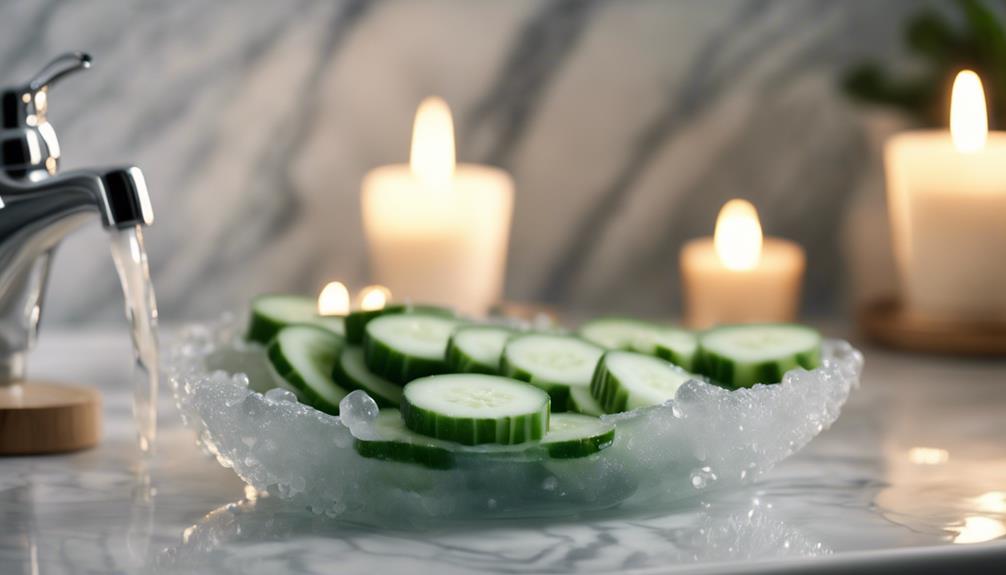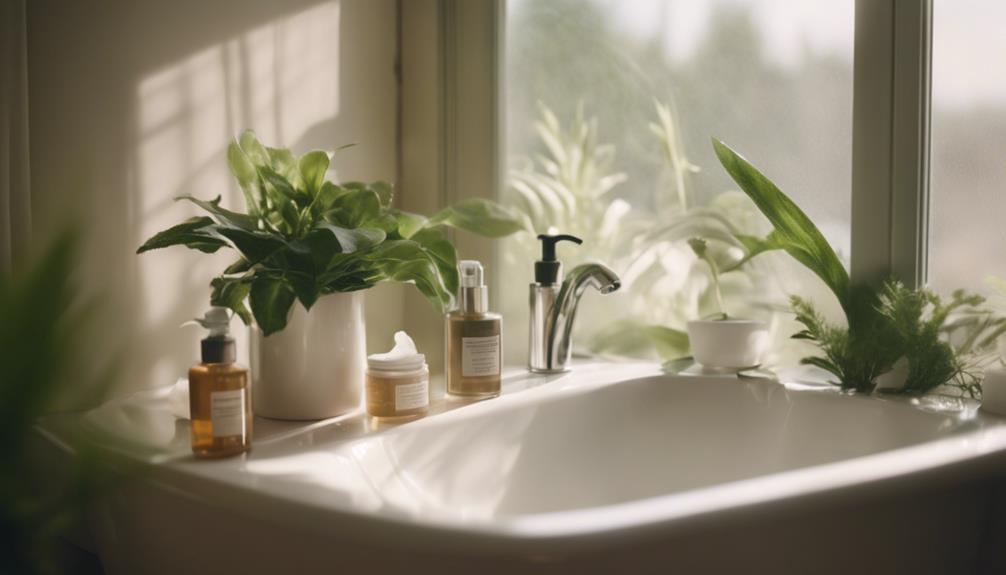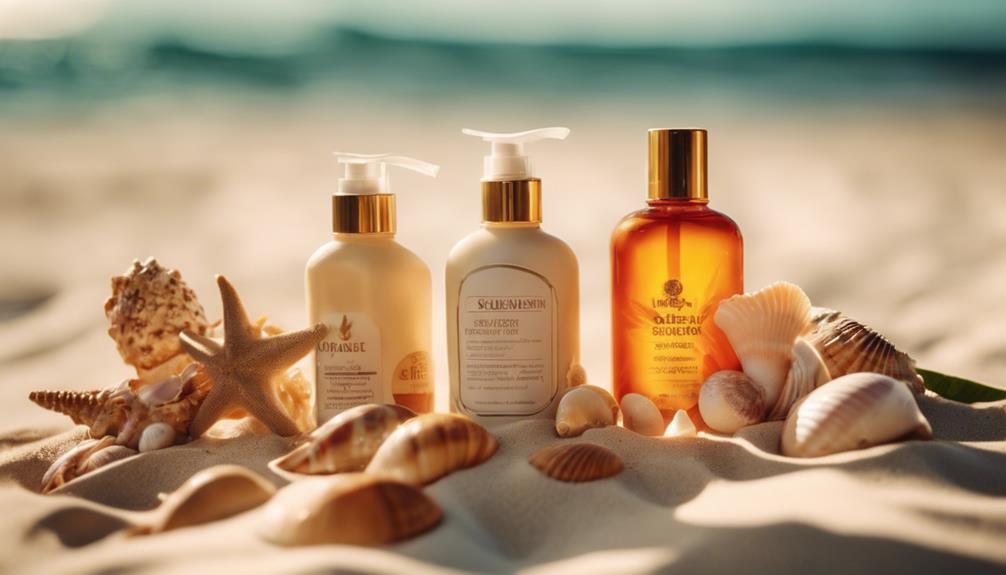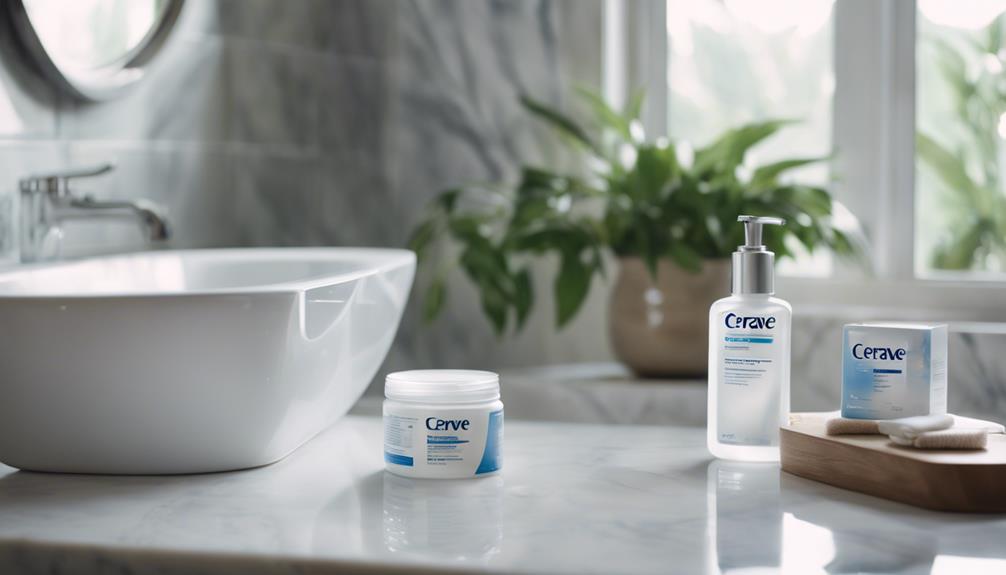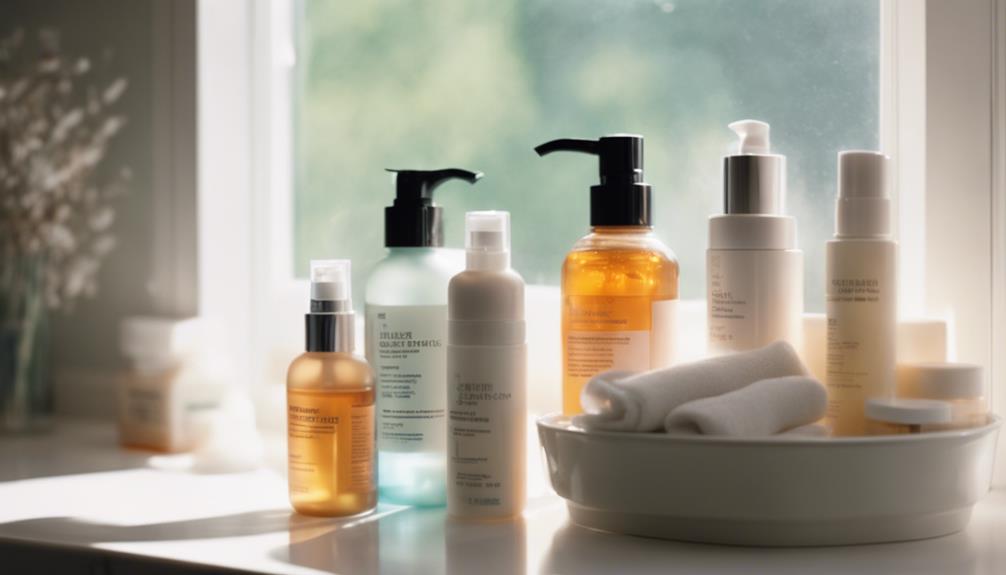You should utilize your ice roller strategically to maximize its benefits. Following cleansing, it readies your skin for skincare products. In the morning, it diminishes puffiness and improves circulation. During the night, it aids in soothing redness and irritation accumulated throughout the day. Aim for 3-10 minutes of rolling, focusing on areas prone to puffiness, such as under the eyes and jawline. By consistently using it, you can amplify the absorption of your products by up to 30%. Interested in optimizing your routine? Stay tuned for more techniques and tips to enhance your skincare regimen!
Key Takeaways
- Use the ice roller post-cleansing to enhance soothing effects and prepare skin for subsequent skincare products.
- Morning sessions help reduce puffiness and improve blood circulation for a refreshed look.
- Nighttime use can alleviate redness and irritation accumulated throughout the day.
- Regularly incorporate ice rolling during warm months to combat heat-induced puffiness.
Best Times to Use Ice Roller
Using an ice roller right after cleansing your face can enhance its soothing effects and prepare your skin for the next steps in your skincare routine.
If you're looking to reduce puffiness and improve blood circulation, using the ice roller in the morning is ideal. It helps tighten your pores, making your makeup application smoother and more flawless.
For nighttime use, the ice roller can be a game-changer. After a long day, rolling it over your skin can alleviate redness and irritation, providing a much-needed cooling sensation. This practice not only relaxes your skin but also maximizes product absorption if you follow up with serums or moisturizers.
In warmer months, incorporating the ice roller regularly can combat heat-induced puffiness, keeping your complexion fresh and revitalized. Just 3-5 minutes of daily use can enhance your skin's appearance temporarily, making it perfect for quick refreshers.
Steps for Effective Ice Rolling
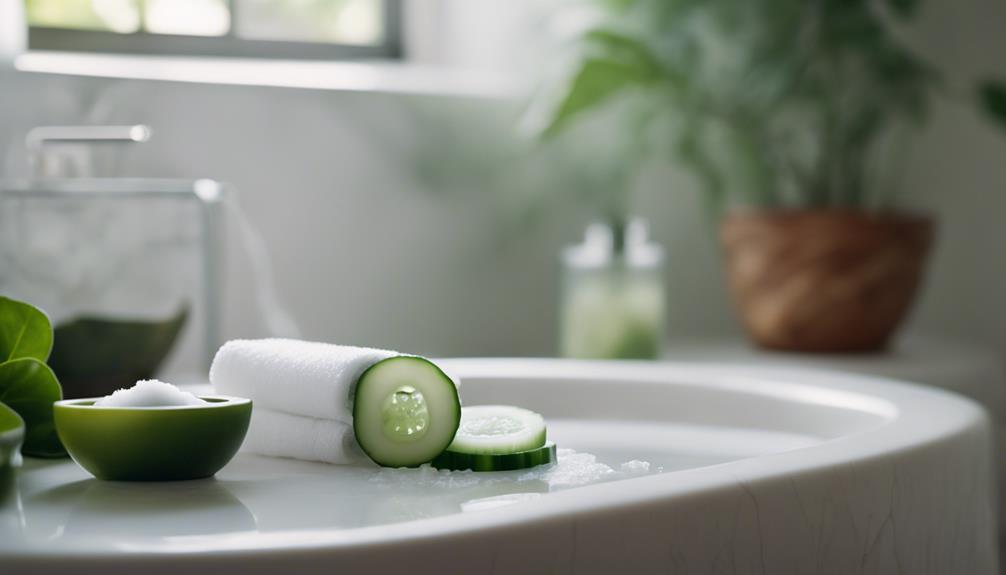
To achieve the best results with your ice roller, start by cleansing your face to confirm it's free from makeup and impurities. This step guarantees your skin is primed for ideal benefits. Next, use gentle pressure while rolling in upward and outward motions, beginning from the center of your face. Avoid areas with active acne to prevent irritation.
Focus on specific zones prone to puffiness, like under the eyes and along the jawline. Spend extra time on these areas for targeted relief and enhanced effectiveness.
After your ice rolling session, follow up with your favorite skincare products. The cooling effect helps tighten pores and improves absorption into the skin, boosting the efficacy of your routine. Aim for regular sessions lasting between 3-10 minutes to maximize the benefits of using an ice roller without risking skin damage.
Here's a quick reference for your ice rolling routine:
| Step | Action |
|---|---|
| 1. Cleanse | Remove makeup and impurities |
| 2. Roll | Use upward and outward motions |
| 3. Target Areas | Focus on puffiness-prone zones |
| 4. Follow Up with Skincare | Apply products for enhanced absorption |
Key Benefits of Ice Rolling

Ice rolling offers a range of benefits, from reducing puffiness and inflammation to enhancing the absorption of your favorite skincare products.
When you use an ice roller, it helps reduce inflammation by constricting blood vessels, making it especially effective for soothing under-eye bags and facial swelling. This cooling technique can also stimulate blood flow and improve circulation, promoting a radiant complexion and faster skin cell turnover.
Regularly incorporating an ice roller into your routine can help minimize the appearance of enlarged pores, leading to a smoother skin texture that enhances makeup application. By tightening your pores, ice rolling can considerably enhance absorption, ensuring that the active ingredients in your skincare products penetrate deeper into your skin for maximum effect.
Additionally, the soothing properties of ice rolling provide relief from tension and discomfort, making it an excellent tool for stress relief in your skincare regimen.
Whether you're looking to reduce puffiness, improve circulation, or simply pamper yourself, an ice roller is a versatile addition that can elevate your skincare routine.
Ideal Skin Types for Ice Rolling

When it comes to ice rolling, you'll find it beneficial no matter your skin type.
Oily, combination, sensitive, mature, acne-prone, and dry skin can all gain unique advantages from this technique.
Let's explore which skin types stand to benefit the most and what professionals recommend for your routine.
Best Skin Types
All skin types can benefit from ice rolling, but oily and combination skin particularly thrive from its oil-reducing and pore-minimizing effects. By using ice rollers, you can effectively manage excess oil production, leading to a smoother complexion.
Acne-prone skin also sees significant advantages, as ice rolling helps reduce inflammation and soothe breakouts, promoting a clearer appearance.
If you have sensitive skin, don't worry! When done gently, skin icing can calm irritation and reduce redness, providing relief without aggravating your skin.
For those with mature skin, regular ice rolling enhances elasticity and firmness, making it a fabulous addition to your anti-aging routine.
Even dry skin can benefit from ice rolling; it offers hydration and revitalization, delivering a rejuvenating boost that enhances the effectiveness of subsequent skincare products.
Incorporating ice rolling into your routine allows you to maximize the benefits of ice while catering to your specific skin type. So go ahead, grab an ice roller, and start enjoying the cooling relief and visible improvements for your skin!
Professional Recommendations
Many skincare professionals recommend ice rolling for individuals with oily and combination skin due to its ability to reduce excess oil and minimize pores. By using the ice roller, you can help reduce the appearance of enlarged pores while promoting better blood circulation in your skin. This technique not only enhances the absorption of your favorite skincare products but also gives your complexion a refreshed look.
If you have sensitive skin, you can still benefit from ice rolling—just remember to use it gently. It provides a soothing effect that calms irritation without causing further redness.
For those with mature skin, incorporating ice rolling into your routine can improve elasticity and firmness, making it a fantastic anti-aging treatment.
Acne-prone skin also sees significant advantages; ice rolling can help reduce inflammation and redness, aiding in the healing process of breakouts.
Maintenance and Care for Ice Roller
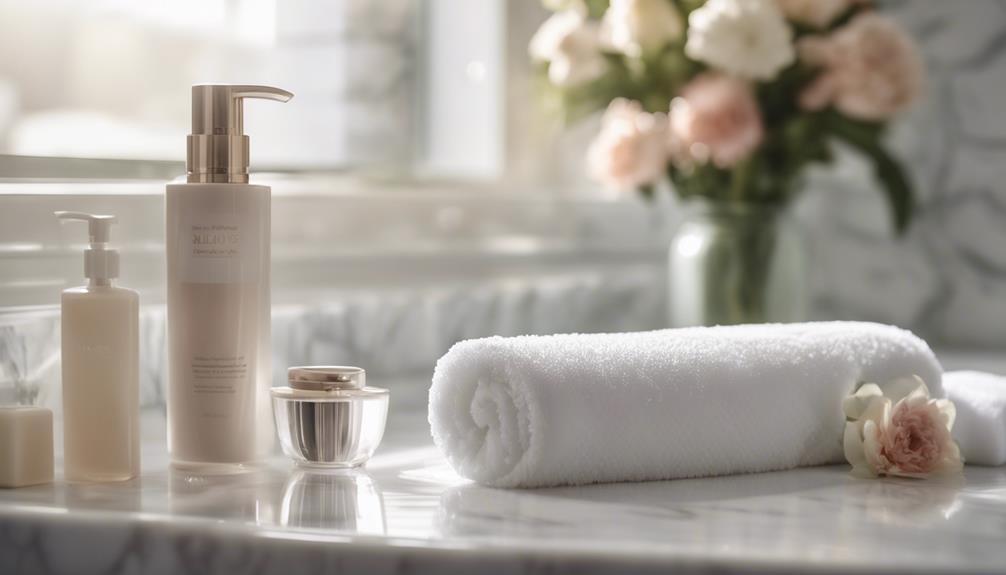
Regular maintenance of your ice roller is crucial to guarantee its longevity and effectiveness in your skincare routine. By following a few simple steps, you can make certain your roller remains in top condition, maximizing its cooling properties and ensuring durability.
- Clean after each use: Regular cleaning is essential to prevent bacteria transfer. Use a microfiber towel with soapy water or cotton balls soaked in alcohol for effective results.
- Focus on all parts: Make sure to clean every component, especially the hinges, to maintain its functionality. Neglecting these areas can lead to issues over time.
- Store properly: To preserve the cooling properties, always store your ice roller in an airtight bag when not in use. This prevents freezer odors from affecting your roller.
- Avoid abrasive materials: When cleaning, steer clear of any abrasive materials. These can damage the surface, compromising its effectiveness on your skin.
Techniques for Maximizing Benefits
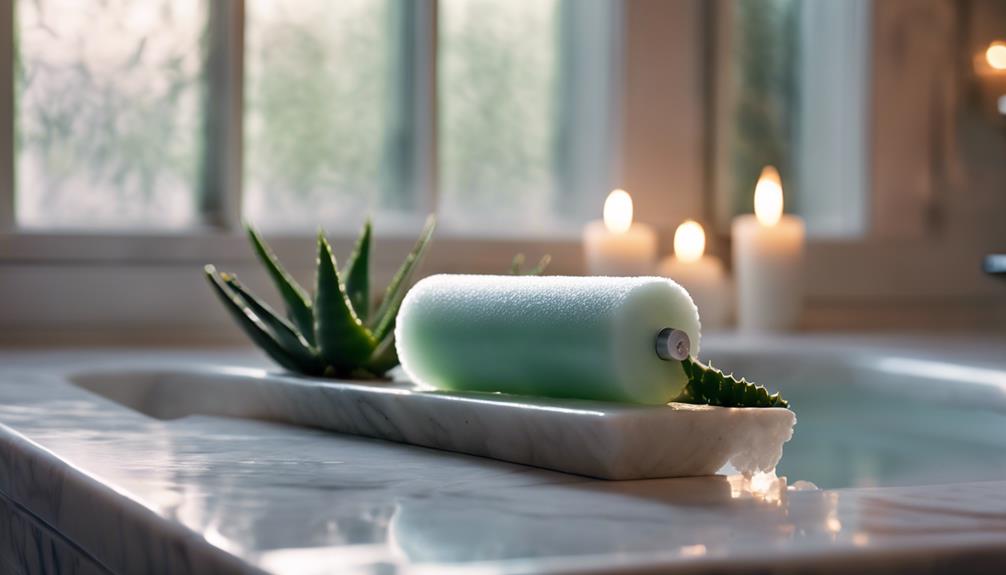
To get the most out of your ice roller, focus on proper rolling techniques and timing.
You'll want to target specific areas, like under your eyes, to really address puffiness and enhance your skincare routine.
Let's explore how to maximize the benefits for your skin.
Proper Rolling Techniques
Using gentle, upward strokes while rolling from the center of your face outward helps maximize the benefits of your ice roller. This technique not only promotes blood flow but also aids in lymphatic drainage, reducing puffiness and irritation. Here's how to enhance your ice rolling sessions:
- Start Clean: Begin your ice rolling session immediately after cleansing your face to guarantee your skincare products absorb better when applying them later.
- Focus on Problem Areas: Pay special attention to the under-eye region, where cold temperatures can help alleviate dark circles and swelling.
- Incorporate Neck and Décolletage: Extend your rolling to your neck and décolletage for thorough treatment, enhancing overall skin health.
- Limit Session Time: Keep your rolling sessions to 5-10 minutes to prevent irritation from prolonged exposure to cold.
Timing for Best Results
Incorporating the ice roller into your morning routine can considerably reduce puffiness and invigorate your complexion before makeup application.
By using the ice roller immediately after cleansing, you can enhance absorption of your skincare products, allowing them to penetrate deeper into your skin. The cold temperature helps constrict blood vessels, which not only reduces puffiness but also temporarily minimizes the appearance of fine lines.
Aim for daily use of the ice roller for about 3-5 minutes. This consistent practice can maintain your skin's energy and keep it looking fresh. During warmer months, rolling can be particularly beneficial, as it combats heat-related skin issues like redness and inflammation.
You might also find evening sessions helpful, especially after harsh treatments, as they promote relaxation and soothe any irritation.
Whether it's morning or evening, using your ice roller effectively can elevate your skincare routine and guarantee you reap maximum benefits. Remember, timing is essential—so make it a habit to integrate this rejuvenating tool into your daily regimen for the best results.
Targeted Areas of Focus
Focusing on specific areas like under the eyes and jawline can greatly enhance the benefits of your ice rolling sessions. An ice roller can help target specific concerns, such as irritated skin and puffiness, by promoting circulation in the skin.
Here are some techniques to maximize your ice rolling experience:
- Under-eye area: Spend extra time rolling gently along the under-eye region to reduce swelling and achieve a revitalized look.
- Jawline: Apply gentle pressure while rolling along your jawline to alleviate tension and enhance the soothing effects.
- Nasal bridge and temples: Use upward and outward motions to promote lymphatic drainage and improve circulation in these areas.
- Neck: Begin your routine from the neck and move upwards, ensuring that you're encouraging blood flow and relaxation throughout your face.
Incorporating an ice roller into your morning or nighttime skincare routine not only offers a rejuvenating start but also helps in enhancing the absorption of your skincare products.
With consistent use, you'll notice a significant improvement in your skin's appearance and overall health.
Safety Precautions for Ice Rolling
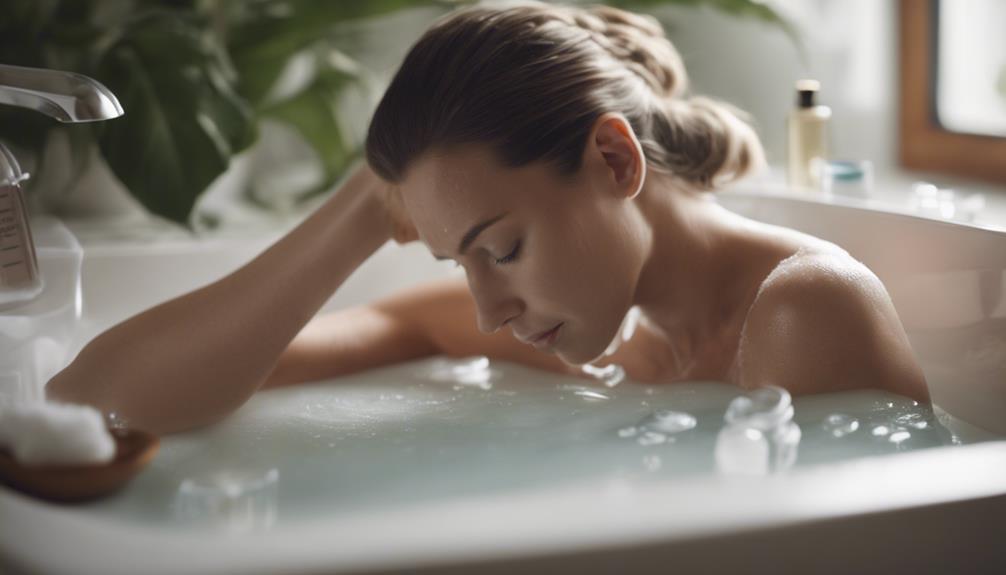
Ice rolling can be a revitalizing addition to your skincare routine, but it's vital to follow safety precautions to protect your skin from potential harm. To maximize your ice rolling treatment, keep the following guidelines in mind:
| Precaution | Description |
|---|---|
| Limit Duration | Keep sessions to 5-10 minutes to prevent skin damage. |
| Avoid Direct Contact | Use a barrier, such as a cloth, to avoid irritation from direct ice contact. |
| Cleanliness | Verify your ice roller is cleaned with alcohol after each use to prevent bacterial transfer. |
| Monitor Reactions | Start with short sessions and observe your skin, especially if you have sensitive skin. |
If you notice any irritation, redness, or discomfort, discontinue use immediately. It's important to consult a dermatologist if you have pre-existing skin conditions. By following these precautions, you can safely enjoy the benefits of ice rolling while minimizing the risk of skin damage.
How Can Using Vitamin C in Skincare Routine Complement the Benefits of Using an Ice Roller?
When incorporating an ice roller into your skincare routine, it’s important to also consider the best practices for vitamin c in skincare. Using vitamin C in your routine can complement the benefits of using an ice roller by providing antioxidant protection and brightening effects, enhancing the overall results of your skincare regimen.
Conclusion
Incorporating an ice roller into your skincare routine is like adding a revitalizing breeze on a hot summer day.
Use it after cleansing or before applying serums to awaken your skin and boost absorption.
With each glide, you're not just soothing puffiness but also elevating your glow, turning your daily ritual into a rejuvenating escape.
So, grab that ice roller and let it work its magic, transforming your skin into a canvas of radiance.
